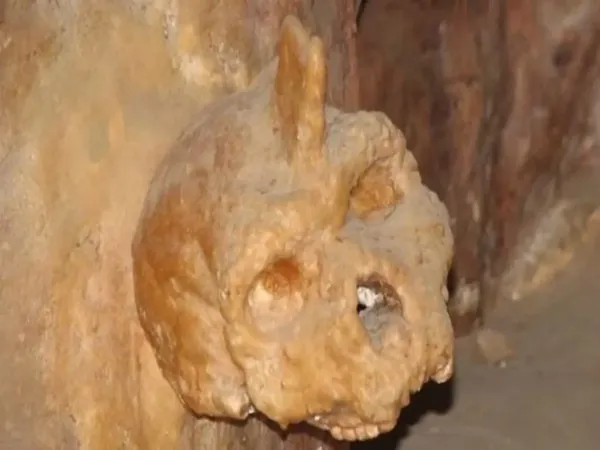
Mystery Unveiled: Ancient 300,000-Year-Old Skull Finally Identified as a Primitive Hominid
2025-08-31
Author: Jacob
A Breakthrough After 60 Years
After decades of speculation, scientists have confirmed the origins of a remarkable 300,000-year-old skull discovered in 1960. Originally embedded within the walls of the Petralona Cave in northern Greece, this ancient artifact has finally revealed its secrets thanks to advanced research methods.
Revolutionary Dating Techniques Uncover the Past
Using cutting-edge uranium-thorium dating techniques, researchers have deduced that the skull, once thought to date between 170,000 and 700,000 years, is actually 286,000 years old. This vital finding not only sheds light on the skull's origins but also aligns with earlier studies suggesting that its owner cohabited Europe with Neanderthals.
Meet the 'Petralona Man'
Upon examining the fossil's dimensions and characteristics, scientists have classified the skull as male and dubbed it the 'Petralona man.' This intriguing designation highlights its significance in understanding human evolution.
Homo Heidelbergensis: The Ancestors Among Us
Belonging to the Homo heidelbergensis group, which thrived between 300,000 and 600,000 years ago, these ancient beings are thought to have originated in Africa before some ventured into Europe around 500,000 years ago. This revelation alters our understanding of human lineage and migration.
The Implications of This Discovery
According to the groundbreaking study published in the Journal of Human Evolution, "From a morphological perspective, the Petralona hominin represents a distinct and more primitive group than Homo sapiens and Neanderthals." The new dating further supports the theory that this population co-existed alongside the Neanderthal lineage during the Middle Pleistocene era in Europe.
Exploring the Petralona Cave
The Petralona Cave, where this extraordinary discovery was made, is nestled in Greece's Chalkidiki region, roughly 50 kilometers from Thessaloniki. This ancient limestone cave harbors an extensive horizontal karstic network, offering a vital glimpse into our prehistoric past.









 Brasil (PT)
Brasil (PT)
 Canada (EN)
Canada (EN)
 Chile (ES)
Chile (ES)
 Česko (CS)
Česko (CS)
 대한민국 (KO)
대한민국 (KO)
 España (ES)
España (ES)
 France (FR)
France (FR)
 Hong Kong (EN)
Hong Kong (EN)
 Italia (IT)
Italia (IT)
 日本 (JA)
日本 (JA)
 Magyarország (HU)
Magyarország (HU)
 Norge (NO)
Norge (NO)
 Polska (PL)
Polska (PL)
 Schweiz (DE)
Schweiz (DE)
 Singapore (EN)
Singapore (EN)
 Sverige (SV)
Sverige (SV)
 Suomi (FI)
Suomi (FI)
 Türkiye (TR)
Türkiye (TR)
 الإمارات العربية المتحدة (AR)
الإمارات العربية المتحدة (AR)